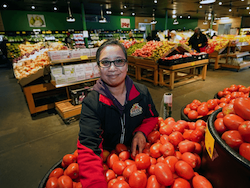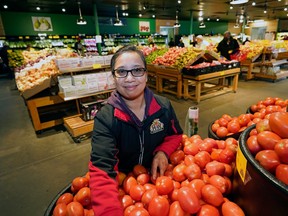
In oversimplified terms, if the availability of a particular commodity gets stretched, or more people suddenly desire that commodity, it becomes more valuable and the price goes up. The opposite effect occurs when more product enters the market or there is a decline in the number of people seeking it.
However, we also know such dynamics are rarely pure in our capitalist system, since there are a number of other factors that can be influential.
At least, this is what I came to learn when I started researching food costs as part of our latest Groundwork project on affordability.
Through survey responses, emails and phone calls, Groundwork participants cited rising grocery bills as one of their most concerning cost pressures, just behind utilities.
“My husband and I often skip dinner or have a bowl of cereal after the kids go to bed because we simply cannot afford to feed everyone,” one parent told us.
(Columnist’s note: cereal doesn’t seem especially cheap either).
And behind it all, there’s a great deal of confusion around why we’ve seen the likes of $10 bacon and $7 blueberries, and why the government seems either unwilling or unable to do something about it.
So for this column, my hope is to give a high-level overview of some of the factors influencing higher prices, and why this is such a difficult issue to understand. Because in a word, the dynamics of food economics in a global market are … complex.
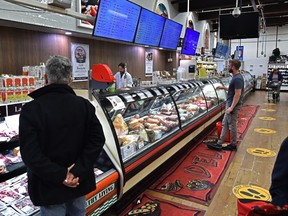
Price hikes highest in 13 years
According to Statistics Canada, the year-over-year increase in store-purchased groceries reached 6.5 per cent in January, then hit 7.4 per cent in February — a jump not seen since 2009.
Such numbers are at the high end of Canada’s Food Price Report, an annual collaboration of four universities, which projects overall costs to eat this year will rise between five and seven per cent.
In real terms, the report says a family of four with a teenager and pre-teen can be expected to incur food costs of $14,767, up nearly $1,000 from last year. However, the report’s authors emphasize this is a national average, which means some regions of the country, including Alberta, are likely to see even bigger escalations.
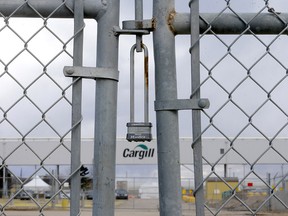
Supply chains under stress
As to what’s driving this, many of you will have heard reference to supply chain disruptions, a term that can describe a variety of problems getting products from farm to factory to frying pan. It could be droughts, crop diseases, the war in Ukraine — basically anything that affects growing and processing.
While supply chains in North America have actually proven very resilient during the pandemic, there is no doubt of headaches behind the scenes. A recent example involves shortages of certain raw materials used for packaging, which forces companies to reduce or slow production, pay more for those materials or switch to something else.
Many also put transportation bottlenecks into this category, such as the rainstorms in B.C. last year that closed truck routes, and blockades of railways and highways by protesters.
“The longer you take to move anything around, the more expensive it gets,” said Sylvain Charlebois, director of the Agri-Food Analytics Lab at Dalhousie University and project lead for the food price report.
“It costs you more fuel, more time, and there is more waste because in many cases you are dealing with a cold chain (for produce and meat).”
A further significant factor is labour shortages, including insufficient harvesters and pickers, processing plant employees and truck drivers. Some companies have acted to fill certain gaps with greater automation, but others have been forced to raise wages, the costs of which can be passed to consumers.
(There is a very interesting debate, which I won’t get into here, as to what extent pay hikes contribute to higher consumer prices).
Then there’s COVID, which has added to the supply chain disruptions, tacked on employer costs, hurt efficiency and led to temporary plant shutdowns.
Pandemic-related consumer hoarding also hasn’t helped. Nor has the recent price surge in oil and gas, which companies have cited as an increasing burden to their costs for transport, refrigeration and other energy requirements.
On this front, political leaders have blasted the piling on of the federal carbon tax, though evidence suggests carbon taxes, so far, have had a relatively minor effect on overall food prices.
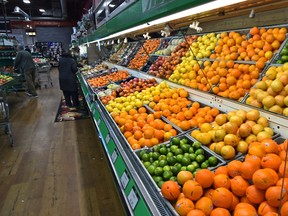
Who is profiting most?
As you might expect, fingers tend to get pointed in a lot of directions.
At the agricultural level, University of Alberta resource economics professor James Rude said farm prices typically represent less than 15 per cent of final food costs.
Other than dairy and poultry, he said Canada is an importer of agricultural products and is therefore subject to world market prices. Right now wheat and canola prices are unusually high, but that’s largely due to weather and market factors mostly outside our control, including the Russia-Ukraine war.
As for manufacturers, wholesalers and retailers, the current situation has heightened attention on long-standing disputes around who is profiting most and whether those profits are reasonable.
Numbers may tell part of the story, in that grocers have been enjoying strong profits for a while and have stated plans to do even better. In fact, Canada’s two largest grocery chains — Loblaw Companies Ltd., and Empire Co. Ltd. (which owns Safeway) — both posted significantly higher net earnings in the latest quarter as compared with the previous year.
The optics of that aren’t great, although analysis gets complicated because the big grocers tend to be diversified companies that also make food, sell cosmetics, and provide banking services.
“In the grand scheme of things … grocers have to do a lot to generate like a 3.5 per cent profit,” he said. “I tell people, ‘If you feel grocers are making much money, then what should be the threshold?’”
Wiseman also noted that grocers have taken on additional costs during the pandemic for safety enhancements and services like increased online ordering and delivery.
Either way, there is no definitive answer I can see to the profit question, and I suspect much of it comes down to what each of us believes to be fair.
Other factors I didn’t get to include are Canada’s controversial supply management system for products like dairy and a lack of grocery competition.
We will discuss these and other issues in the next Groundwork effort, which will focus on whether there are things we can do to ward off harmful food inflation.
Here’s a preview of the answer: Not easily.
Source: EdmontonJournal
